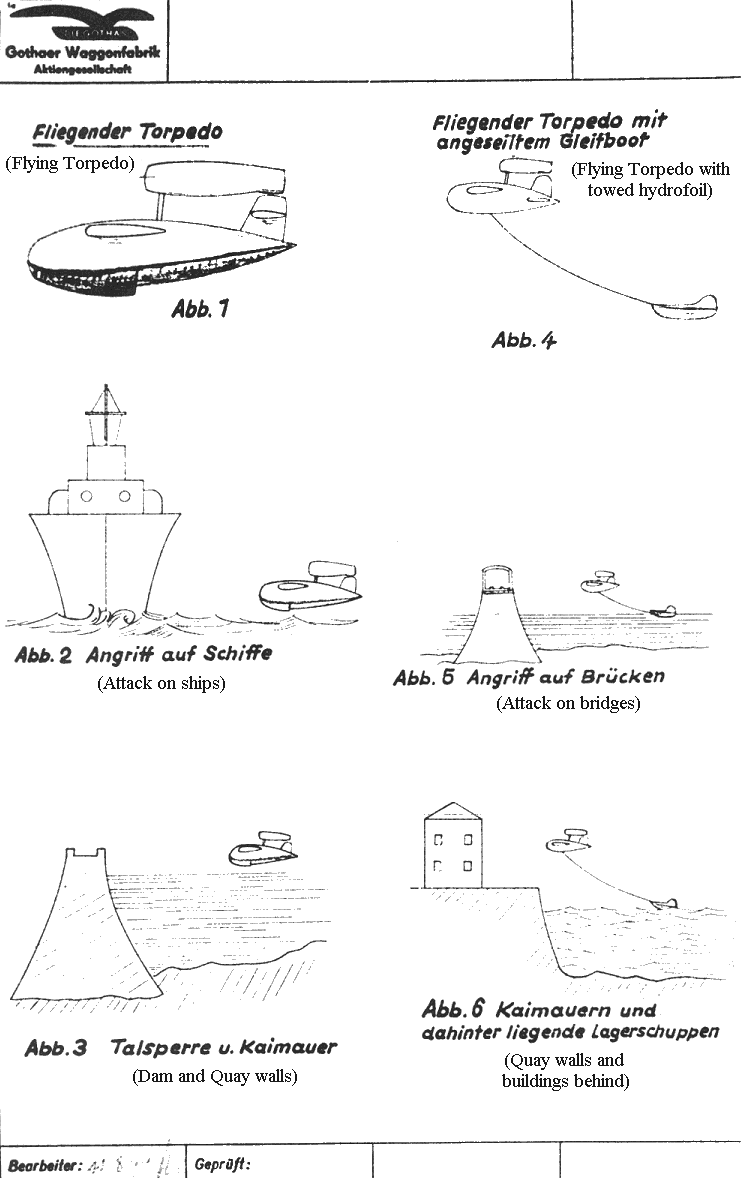
Subject: Use of the V1 “retaliation weapon” against targets that extend above the waterline, such as ships, bridges, dams, quay walls and nearby storage sheds.
To this purpose two different configurations are proposed:

To this purpose two different configurations are proposed:
A) Flying torpedo (see fig. 1)
A hull (1) similar to that of a flying boat is attached to the fuselage of the V1. The weight is adjusted in such a manner that the “torpedo”, after having been dropped by an aircraft, slowly descends to the water surface and there races at high speed like a speedboat towards the target.Fig. 2 Attack on a ship
Fig. 3 Attack on a dam or quay wall
B) Flying torpedo with towed speedboat hull (see fig. 4)
In the center of gravity of the aircraft a speedboat hull is attached with a cable. When this assembly descends onto the water surface as described above, the speedboat hull will experience a certain upwards force, and the flying torpedo flies (2), as shown in fig. 4, above the water surface towards the target. The purpose of the speedboat hull, in this case, is to maintain the aircraft at a determined height above the water surface (in the same manner as a captive balloon), so that the operation is also possible in turbulent weather conditions.
This arrangement offers particular advantages for the destruction of bridges (see fig. 5). The flying torpedo is dropped on the river downstream or upstream of the bridge to be attacked, flies (2) independently towards the bridge and explodes on contact.
This arrangement can also be used with good results to attack storage sheds located close to quay walls (see fig. 6). The chance of hitting a target is here particularly high, because the flying torpedos, when dropped in a harbor basin, will hit with the highest probability ships, quay walls, storage sheds, etc.
With this arrangement is does not matter whether the bombs are located in the aircraft fuselage, in the speedboat hull or distributed over both.The flying torpedo can, of course, also be launched from ships, can be guided to its target by remote control or can also be directed onto the target by a pilot - who jumps only at the last moment from the aircraft.
(1) Literally: “gliding surfaces”.
(2) “Gleitet” in German. Of course the V1 does
not “glide”, it’s powered at this stage. The notion is that of moving steadily
at a constant height.
Christian Julius
Andreas Otte
Hendrik Weise
Chris Degand